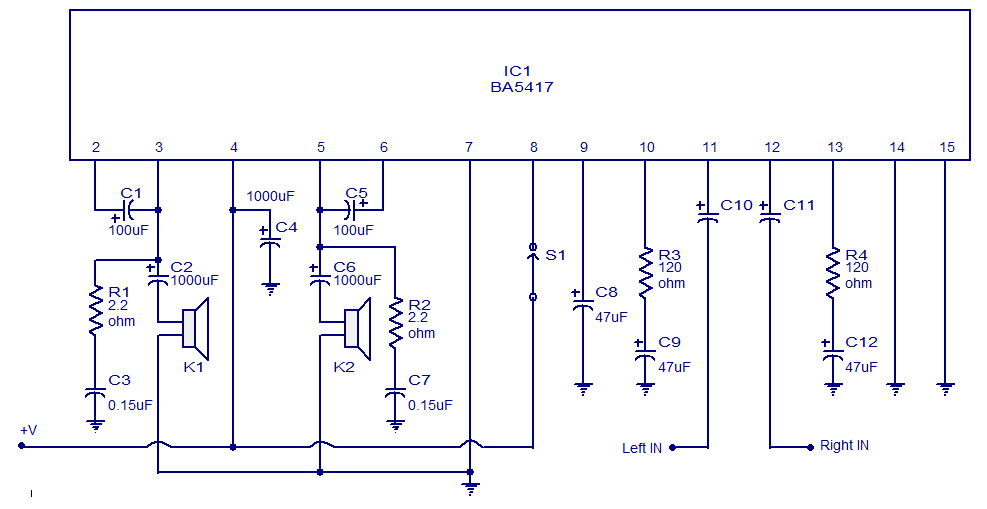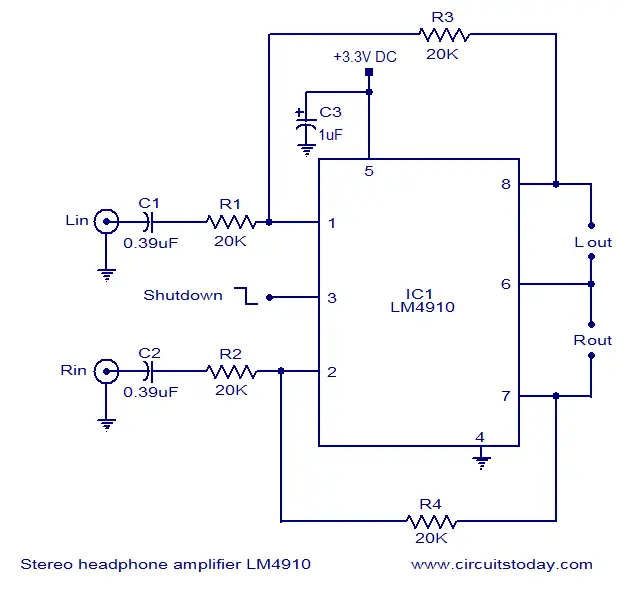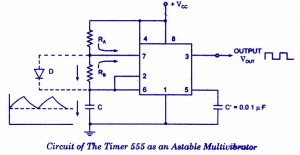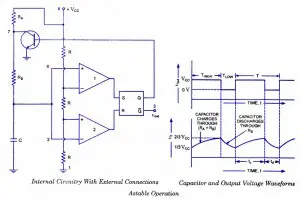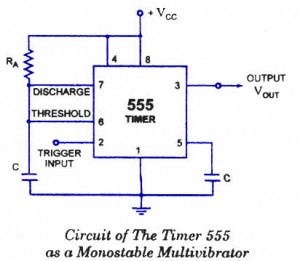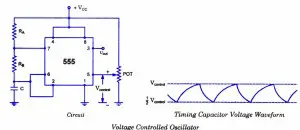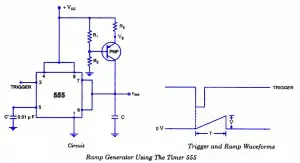BA5417 is a stereo amplifier IC with a lot of good features like thermal shut down, standby function, soft clipping, wide operating voltage range etc. The IC can deliver 5W per channel into 4 ohm loud speakers at 12V DC supply voltage. The BA5417 has excellent sound quality and low THD (total harmonic distortion) around 0.1% at F=1kHz; Pout=0.5W.
Description.
Setup and working of this stereo power amplifier circuit is somewhat similar to the BA5406 based stereo amplifier circuit published previously. C10 and C11 are DC decoupling capacitors which block any DC level present in the input signals. C2 and C6 couples the amplifiers left and right power outputs to the corresponding loud speakers. C1 and C5 are bootstrap capacitors. Bootstrapping is a method in which a portion of the amplifiers is taken and applied to the input. The prime objective of bootstrapping is to improve the input impedance. Networks R1,C3 and R2,C7 are meant for improving the high frequency stability of the circuit. C4 is the power supply filter capacitor. S1 is the standby switch. C8 is a filter capacitor. R3 and R4 sets the gain of the left and right channels of the amplifier in conjunction with the 39K internal feedback resistors.
Circuit diagram.
Notes.
- Supply voltage range of BA5417 is from 6 to 15V DC.
- The recommended supply voltage for this circuit is 12V DC.
- The power supply must be well regulated and filtered.
- BA5417 requires a heatsink.
- The circuit can be assembled on a perf board without much degradation in performance.
Few other stereo amplifier circuits that you may like.
BA5406 stereo amplifier circuit : Simple stereo amplifier circuit that can deliver 5 watt per channel sound output into a 4 ohm speaker. Operates from 12V DC and requires very few external components. Suitable for low power car audio applications.
TDA1554 stereo amplifier circuit: A very popular stereo amplifier design. This amplifier can output 22 watts per channel into 4 ohm loud speakers. This circuit can be also powered from 12V DC. Low distortion and noise.
2×32 watts stereo amplifier circuit : High quality stereo amplifier design using TDA2050 IC. The circuit requires a +/-18V DC dual supply. Power output is 32 watts per channel into 4 ohm speakers.
Stereo amplifier based on TDA4935 : A stereo amplifier design with a lot of great features like over load protection and thermal shut down. The power out put is 2×15 W into 4 ohm speakers. Operating voltage is 24V DC. Potentiometers for controlling the volume is also included in the circuit.
120W stereo amplifier circuit : A powerful stereo amplifier design using LM4780 audio amplifier IC from National Semiconductors. operates from a +/-35V DC dual power supply. 2×60 watt power output into 8 ohm loud speakers. The circuit has good power supply rejection and also there is a built in mute circuitry.
